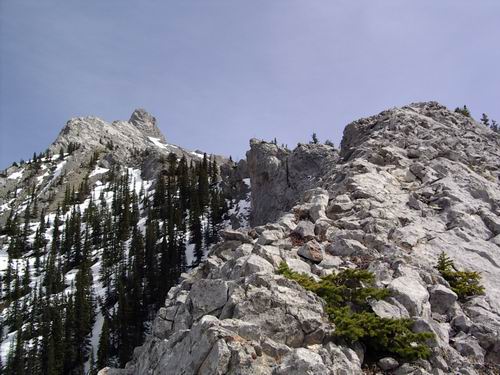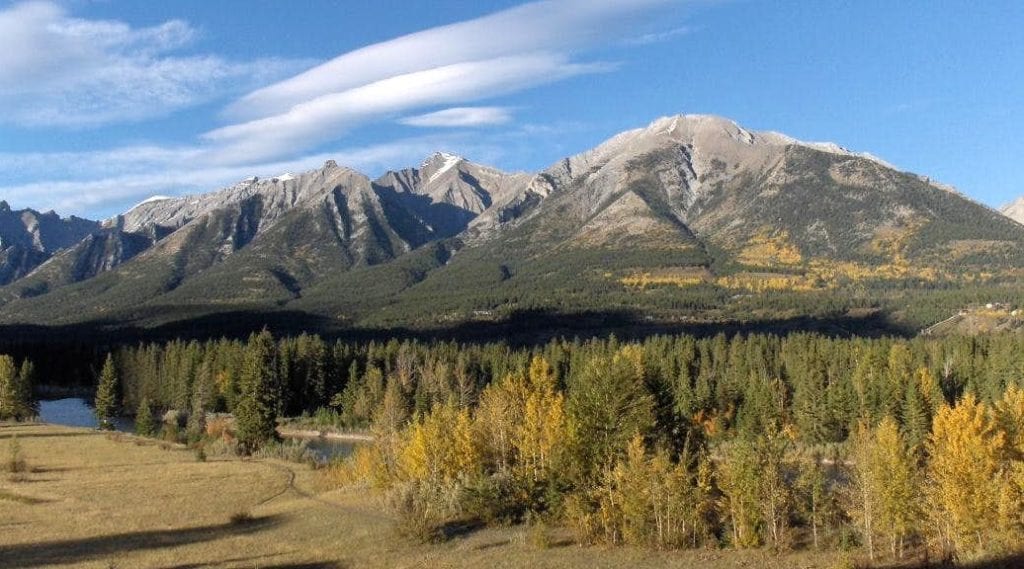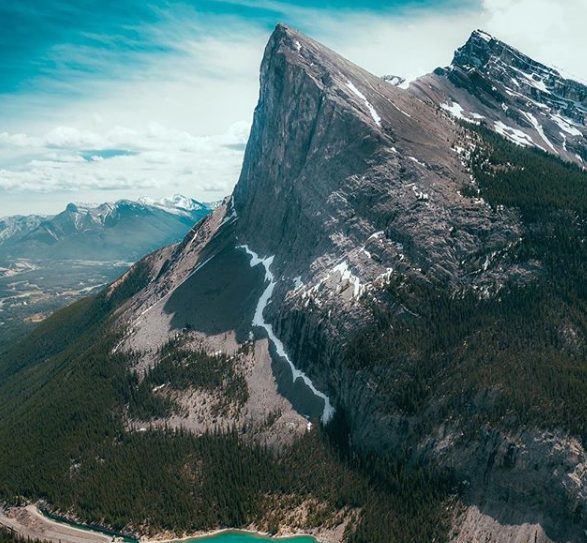Ending Colonialist and Racist Place and Route Names
Examples from the Bow Valley and why we need to continually work on finding more inclusive names for peaks, places and route names

There are a number of colonial and racist place and route names that need to be changed in Canada. For example, in the Bow Valley, Squaw’s Tit is still the name used for a major peak. It’s something I’ve written about before. It’s the unofficial name for the high point of a ridge south of Mount Charles Stewart and west of Lady Macdonald in the Fairholme Range. The term Squaw is a derogatory racial slur aimed particularly at Indigenous women.
Even in guidebooks, authors have said that we use this name because we haven’t collectively agreed on a better one. It’s even still referred to Squaw’s Tit on Wikipedia here and as a geotag on Instagram. Some hikers have started to refer to it as only the Tit.
A few years ago, I wrote a piece called Let’s Not Call It Squaw’s Tit Anymore and mentioned that there was no official name because despite doing research I couldn’t find one. I have just received word that the peak does have an official name, but you can’t find it online.
The official name is Princess Stephanie’s Mountain and while it’s still a colonial name, it’s less sexist than the current name. If we could collectively move forward to change how we refer to that most identifiable landmark then I think it would be a move in the right direction. It will take all of us to change what it’s called on social media, in guidebooks and on maps.
In Squamish, the Slhanay, a large dome of granitic rock north of The Chief, was formerly known as The Squaw. In 2009, the name Slhanay was adopted for the area after consultation with local First Nations.

Whiteman’s and Tunnel
Ha Ling Peak was the official name given to a peak south of Canmore, and east of Whiteman’s Pass, Whiteman’s Pond and Whiteman’s Crag, in 1997 after having been called Chinaman’s Peak. In 1896, Ha Ling was a Chinese cook for the CPR who was bet 50 dollars that he couldn’t climb the peak in less than 10 hours. He left at 7 a.m. and was back by lunch. Nobody believed his story, so he led doubters to the summit where he then planted a larger flag beside the original, so it was visible from Canmore.
Before Ha Ling’s ascent, it was locally known as The Beehive. Local historian Jerry Auld uncovered why he climbed the peak on the day he did, which you can read about here.
Auld explained: “Ha Ling came from Hunan province, which is very mountainous. The east, south and west sides of the province are surrounded by mountains and hills, such as the Wuling Mountains to the northwest, the Xuefeng Mountains to the west, the Nanling Mountains to the south, and the Luoxiao Mountains to the east. And then I found out that the date in October corresponded to the ninth day of the ninth month of the Chinese lunar calendar. Since nine is a masculine number, heavy in the ‘yang’ energy, this date was auspicious for an abundance of energy, and was the so-called double-yang festival. It’s more commonly referred to as the Double Ninth Festival. There is an old legend in Hunan that the festival celebrates the occasion that a monster appeared in the province in pre-history and was wreaking devastation. A hero told everyone to climb to the top of a nearby peak for safety until he was able to dispatch the monster. So, ever after, on the Double Yang festival, young men would climb mountains to commemorate the feat.”
Ha Ling Peak is famous for climbers thanks to the dozen rock climbs up the north face, each of which will take climbers the majority of a day to complete. The most popular of the routes being the Northeast Face III 5.6 and Sisyphus Summits IV 5.10d.
The name Whiteman’s Crag was slapped on a 90-metre slab of rock above the Grassi Lakes parking lot by local climbers because the pond and pass are named Whiteman’s, but most climbers agree the name of the crag should change. Because the wall is a continuation of Kanga Crag, Kanga South or Winnie Wall have been suggested. Because after all, Kanga was a character from Winnie the Pooh and it’s the peak next to the East End of Rundle (EEOR).
Tunnel Mountain in Banff is another peak with a controversial name. Railway surveyors once considered building a tunnel through it, but abandoned the plan. However, the name stayed. A local First Nation, the Stoney Nakoda, have been lobbying to change the mountain’s name to Sacred Buffalo Guardian Mountain, a translation of their traditional name for it. Despite years of effort, the name Tunnel remains, see here for more.

Route Names
In the Bow Valley, a discussion has started on the Bow Valley Climbing Community page about reviewing racist route names, such as White Imperialist, a popular 5.10 at Grassi Lakes. You can visit by joining the group and scrolling down here. An overwhelming majority of local climbers agree that racist route names should change.
In 2019, Bonnie de Bruijn wrote a piece called ‘Controversy Over Sexist Route Names: Really?’ after the conversation started online that we need to rename routes with sexist names. You can read the piece here, in which she said: “But one of the coolest things about rock climbing that I noticed when I started as a teen was how it provided a space and a community for people who may not have fit in elsewhere. All that mattered was the passion and obsession with climbing. It was a kind of inclusivity before inclusivity was a thing. That is a part of climbing’s heritage we should aim to preserve and promote.”
Over the past month, we’ve seen overdue anti-racism protests take place around the world to support Black Lives Matter and Indigenous Lives Matter. A big first step in our outdoor community is to acknowledge that the names of many of the peaks and places in Canada are based on an ugly history of racism and that those names need to change.
Let’s start with referring to that often-hiked peak with a prominent rocky summit in the Fairholme Range as Princess Stephanie’s Mountain, work on renaming Whiteman’s Crag and listen to those in our community who highlight route names that should updated.


